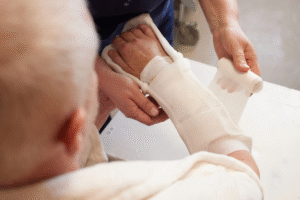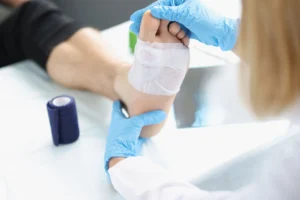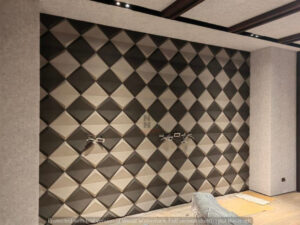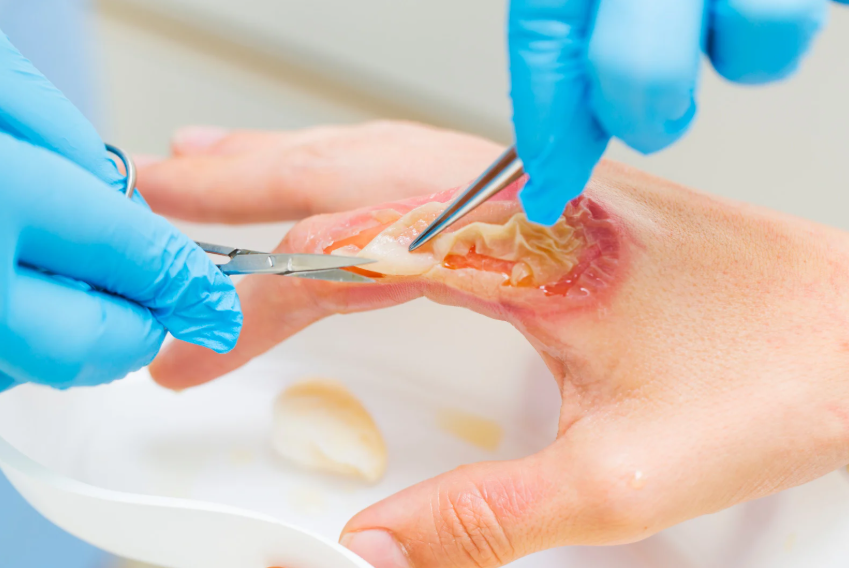Bedsores, also known as pressure ulcers, are a serious medical condition that often affects individuals who are bedridden or have limited mobility. These wounds form when prolonged pressure reduces blood flow to the skin, leading to tissue damage. Treating them requires advanced skills and medical knowledge, which is why the guidance of a Bedsore Specialist is essential. One of the most effective modern methods used in managing these wounds is Negative Pressure Wound Therapy (NPWT). At Kalingap Wound Care Clinic, patients receive expert care from highly trained professionals who specialize in using NPWT to accelerate healing and prevent complications.
What is Negative Pressure Wound Therapy (NPWT)?
Negative Pressure Wound Therapy is a medical treatment that uses a vacuum-assisted system to promote wound healing. This involves placing a foam or gauze dressing inside the wound, sealing it with an adhesive film, and connecting it to a vacuum pump that applies controlled suction. The negative pressure removes excess fluid, reduces swelling, and stimulates new tissue growth. For patients with severe or deep bedsores, NPWT is an innovative solution that offers far better results than traditional dressings. A Bedsore Specialist has the expertise to determine the correct pressure levels, dressing type, and frequency of dressing changes to maximize results.
Why a Bedsore Specialist Recommends NPWT
Not every wound requires NPWT, which is why consulting a Bedsore Specialist is crucial. These professionals know how to assess the wound’s stage, size, and depth before recommending the therapy. They also consider the patient’s overall health, risk of infection, and nutritional status. By customizing treatment, a Bedsore Specialist ensures that NPWT is used effectively and safely. At Kalingap Wound Care Clinic, the team combines advanced wound management with compassionate care, tailoring each therapy plan to achieve the best possible outcome.
How Bedsore Specialists Apply NPWT in Patient Care
A Bedsore Specialist follows a structured approach when applying NPWT:
- Wound Assessment – The specialist carefully examines the wound to determine if NPWT is appropriate.
- Wound Preparation – The wound is cleaned and prepared to ensure no dead tissue or infection remains.
- Dressing Application – Foam or gauze is placed inside the wound, sealed with a film, and connected to the NPWT device.
- Monitoring and Adjustments – The Bedsore Specialist continuously monitors the wound, adjusting the pressure settings and dressing as needed to optimize healing.
Patients receiving NPWT at Kalingap Wound Care Clinic benefit from meticulous care and regular follow-ups, ensuring that the therapy remains effective throughout the treatment process.
Benefits of NPWT for Bedsore Patients
When managed by a Bedsore Specialist, NPWT provides multiple advantages:
- Faster healing compared to conventional methods.
- Reduced risk of infection due to the sealed environment.
- Improved blood circulation that supports tissue repair.
- Less frequent dressing changes, minimizing patient discomfort.
- Enhanced quality of life for bedridden patients who experience reduced pain and quicker recovery.
These benefits are why many patients and families trust Kalingap Wound Care Clinic for advanced wound care solutions.
Risks and Precautions Bedsore Specialists Manage
While NPWT is highly effective, it is not suitable for every patient. A Bedsore Specialist carefully evaluates potential risks, including skin irritation, allergic reactions to dressings, or difficulties maintaining a proper seal. Certain patients, such as those with untreated infections, fragile skin, or poor circulation, may require alternative treatments. This makes the expertise of a Bedsore Specialist invaluable, as they know when NPWT should be applied and when other methods are more appropriate. At Kalingap Wound Care Clinic, patient safety always comes first, and every therapy is closely supervised to minimize risks.
Why Consulting a Bedsore Specialist is Crucial
Attempting to treat bedsores without professional guidance can lead to serious complications such as infections, sepsis, or long-term disability. A Bedsore Specialist provides not only medical treatment but also education for patients and caregivers. They teach proper wound management, repositioning techniques, and preventive care strategies to stop new bedsores from forming. Engaging the services of Kalingap Wound Care Clinic ensures that patients receive expert care backed by years of experience in advanced wound management.
Takeaway
Negative Pressure Wound Therapy is a proven method that accelerates the healing of pressure ulcers, but it requires the skills of a trained Bedsore Specialist to deliver the best results. Through careful wound assessment, application, and ongoing monitoring, specialists can help patients recover faster while minimizing complications. Families seeking reliable, expert wound care can trust Kalingap Wound Care Clinic as the best provider of NPWT and other advanced treatments, ensuring comfort, safety, and long-term healing.
Frequently Asked Questions
How long does Negative Pressure Wound Therapy take to heal a bedsore?
Healing time varies depending on the severity of the wound, but with proper care from a Bedsore Specialist, significant improvement can often be seen within weeks.
Can NPWT be done at home under a specialist’s guidance?
Yes, in some cases, NPWT can be managed at home with proper instructions and follow-ups from a Bedsore Specialist, especially through support from clinics like Kalingap Wound Care Clinic.
Is NPWT painful for patients with pressure ulcers?
Most patients experience little to no pain during NPWT, and many find it more comfortable than frequent traditional dressing changes.
Who is not suitable for Negative Pressure Wound Therapy?
Patients with untreated infections, exposed blood vessels, or extremely fragile skin may not be suitable. A Bedsore Specialist will determine the safest option for each individual.











